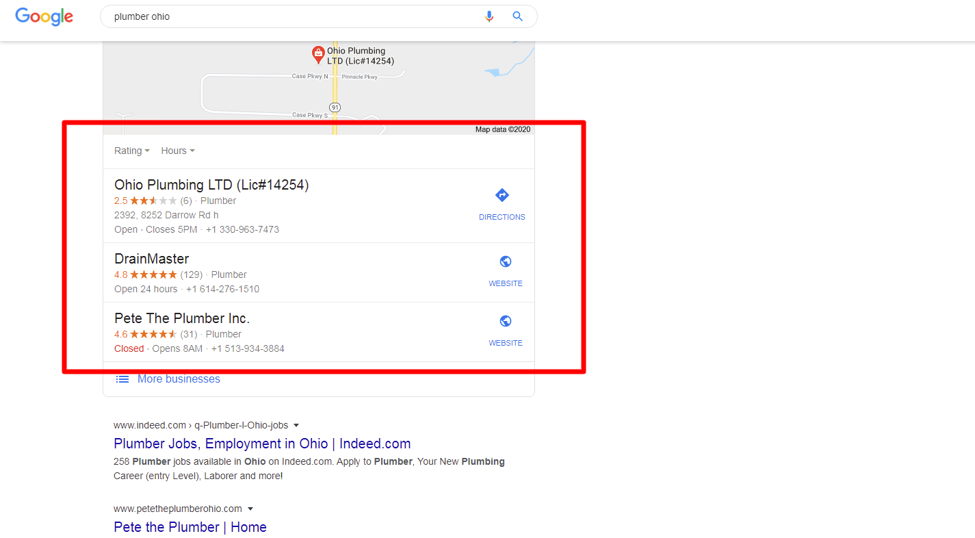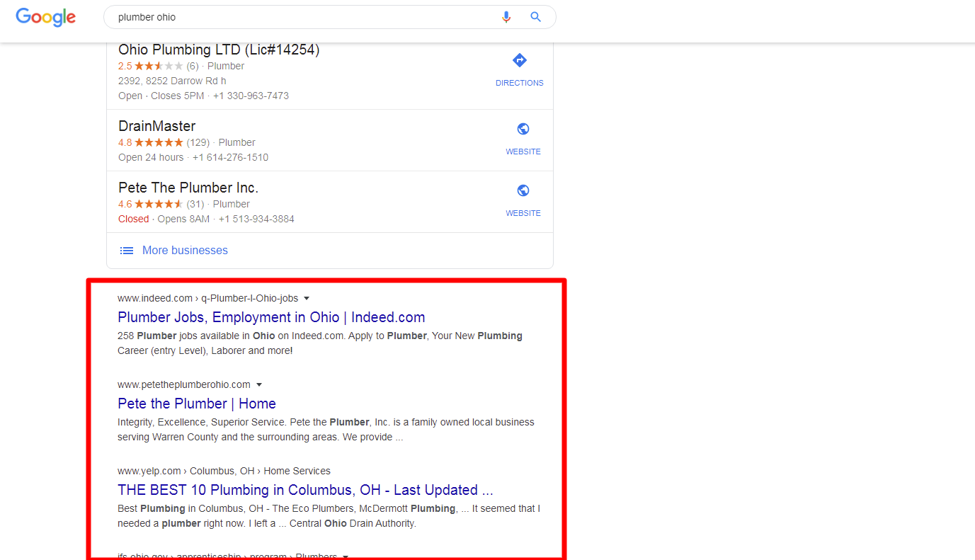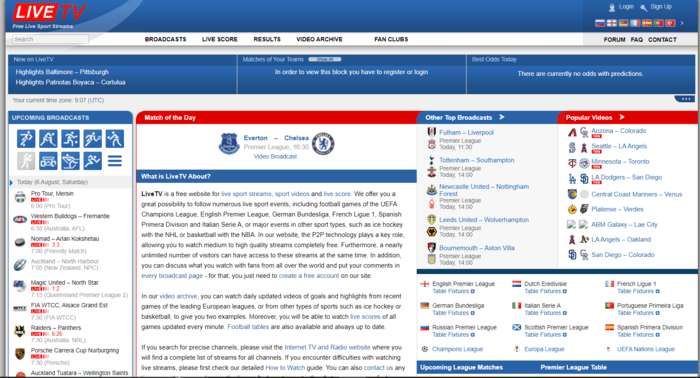Search Engine Optimization (SEO) can be differentiated into two specific types. One is ‘Organic SEO’ which refers to the process of optimizing SEO for generic keywords targeted to within organic search results (on a global scale), and the other that we’re going to talk about in this article is ‘Local SEO’ which is meant for enhancing the search rankings within the locality and for ‘local search queries’ that mainly serve the local customers.
Local SEO is a considerably effective, and also necessary online marketing strategy for small businesses that have their service area in their local region. Especially in the era of 21st century in which nearly all are done through online, local SEO can be a significant weapon for a local business to maximize their growth potential to the fullest locally by doubling, tripling, or even 10x their online visibility and, subsequently a whole lot more leads and sales generated online.
The 4 Key Factors for Local SEO Improvement
In order to improve your local SEO, the 3 things below come as the most important factors:
- GMB – Google My Business (Google Maps)
- Local Organic Search Results
3.Google Maps 3-Pack
- Local Citation
These 4 traits will enable you to generate maximum local visibility, local clicks, leads, and sales..
To understand this, we have to first know how Local SEO works associated with local queries and how it exactly performs in local searches made by our potential local consumers.
We are not far from the truth when we assume that nearly a half of Google searches made through on the internet have local intent. According to Google’s statistics, 46% of all search terms are local queries. A query like “how to fix an AC compressor” shows the serious intent behind it. This parent search query often converts into a higher level of local intent, such as “AC compressor mechanic near me” or “best AC compressor mechanic in Ohio, or London”, or wherever in one’s location.
Search Engines perceive that those are “local search queries” and that the searcher needs a solution by way of a suggestion or a list of experts who can locally provide the solution. This is the information that comes up in the local search engine results pages.
Local 3-Pack and Its Importance
When you perform a local search on Google, you see the featured listings by Google Maps, in which the first top 3 businesses appear off of a GMB search result for a particular local search term. This is known as “local 3-pack” and this is how local businesses featured in the listings generate much more traffic than those that aren’t in. According to statistics, 70% of local searches proceed no further than within a local 3-pack in their local SERPs. In a nutshell, it would appear that search users have a clear preference with a prompt search result that’s displayed just in their quick view.
Google My Business (Google Maps Listings)
Google My Business is nothing else but just your business profile on Google Maps. That said, this is a fairly critical aspect of local SEO and businesses must get listed in GMB if you desire greater local visibility. The data you provide in your listing has to be accurate and thorough for satisfying both human eyes and the Google’s algorithm that determines your rankings.
Local Organic SERPs
Local organic search results are a thing you should consider and improve on for the best local performance as possible. Local organic SERP refers to an organic search result that appears out of a local search query, positioned right below from the 3-pack result.
Local organic SEO works locally and mostly serves the local people with local intent of their particular region; content should be locally optimized to bring the best result in this type of SEO game, such as your homepage, product page(s), blog page, and anywhere that matters.
What is a Local Citation?
Any place where your business information appears together online, either in an online directory or in a business listing website, is known as a ‘Citation’. This information is in the form NAP (N for Name, A for Address, P for Phone number, plus W for Website URL).
Citations can be classified into structured and unstructured citations.
- Structured Citation: A mention of your business information (NAP) written and presented in a structured manner in a business directory such as Google My Business, Yelp, Bing Places, FourSquare, Facebook and name a few.
- Unstructured Citation: A mention of your business NAP on anywhere online outside of business directories or social profiles. (Structured Citation) For unstructured citation building, your NAP information is often written in an unstructured way and without a certain information form, for instance, mentions of your business in a blog comment, in a forum thread, or in your blog article page.
You’ve probably heard about the term “Local Citation” at least once if you’re into growing your local SEO. As a matter of fact, people often stress the importance of Citation when it comes to local SEO, because it really matters and it’s the actual game changer that can open a new era of your local SEO battle ground.
How to improve Ranking in Local Search
Now you are backed by the basic knowledge about local SEO, then let’s get deeper into this. For this, you have to familiarize yourself with three important elements of local search rankings.
- Proximity or closeness indicates how close your business is to your visitor.
- Relevance reveals how relevant your products and services are to the search query.
- Prominence brings to the forefront what your consumers are saying about your products and services
A few of the key attributes that help to achieve success in local SEO have been covered so far. Now let’s look at some of the local SEO services that could make a real difference.
‘SEO Localization’ of the website
Including your city, county or region name throughout the website is called localization.
Those businesses that have many business locations should create what is known as Content Hubs or separate pages for each of these locations. Another form of localization is getting involved in community activities or events in that locality and spreading information about these events or featuring articles on the site.
Developing Citations
One of the most important aspects in local SEO is developing local citations online, specifically in business directories and local listing websites.
This will not only enable customers to find your business online but will also fairly help you to improve your rankings in Google Maps rankings.
One easy tip, yet the most imperative tip about this is “the quantity of your citations matters in local SEO”, meaning the more NAP citations you make over the internet, the better local search exposure will be made for your business.
Listing on Google My Business
Just like developing citations, taking ownership of major web directories, such as Google Maps Listings (GMB), Microsoft’s Bing Place is a critical step that you can’t skip. Statistics indicate that over 85% of those who searched for a specific solution on Google Maps visited the location within the next 48 hours. This is the potential this listing has on traffic and conversions.
Take note that when you’re creating your business profile on Google Maps, be accurate and thorough filling up your information. Don’t miss inputting content and information in all the fields like Business Description, Business Category(ries), Business Hours, and most importantly “NAP related fields: Business Name, Address, Phone Number, and of course, “the Business Website URL”
Reviews and Ratings
Getting more reviews and good ratings is contributing to your local rankings. Google considers it as local engagement which is proof that your business is popular with your local consumers and it passes a signal to Google which leads your listing in the local maps to get positioned somewhere higher just because Google loves businesses or websites that are loved by their search users.
All the reviews made under your business have to sound genuine and showcase the quality and trustworthiness of your products and services. Buying reviews will be detrimental to your growth in the long run as they will be caught and penalized by Google eventually.
In terms of getting quality reviews, there’re ways like listing Google Maps in your newsletter, signature, services, and also on your business cards. By encouraging people to find you on Google Maps, you are generating more reviews for your business. Most people, especially “your actual visitors who ever visit your physical shop” don’t mind leaving a simple review on your business and all that efforts to earn more business reviews are helpful to increase your local customers. (Aligned with this simple, but powerful theory: More Reviews Bring More Customers/New Engagement Brings Another Engagement)
Also, be sure to respond to all your reviews regardless of whether they are positive or negative, with care and consideration. By showing importance to them, you are bound to improve your listing.
Add Images or Photos to your GMB Page
Adding Images or Photos to your GMB Page generates better responses. Visual contents have always proved to be better than text-based content.
Posting photos of your products, your office or shop, or your team lends greater credibility. This plays an important role in generating more engagement.
Another great idea would be to add a video on your page. A video of your shop, office or staff will create a personal rapport with your customers and encourage more visits. This gets more engagement locally and leads to a higher listing. Your images and videos are searchable through Google’s image/video search engines. This is a huge positive for all your inbound traffic searches.
Use Local SEO Keywords judiciously
Keywords are an integral part of any SEO whether it is standard organic SEO of Local SEO. During a local search, the keywords are ranked based on their relevance to the local search query. Therefore, you have to research, identify and test out a few important keywords that will be relevant to the visitor.
The most common mistake committed by many is to use several keywords. Keyword stuffing does not help, on the contrary, it negatively affects your ranking and pulls down your listing. Google is now smart enough to detect unethical attempts to improve ranking with the use of keywords.
The best option is to use very few keywords that have relevance and respond very naturally to the queries.
Strengthen your Backlinks
Last but not least, getting quality backlinks from other sites that point to your domain is a must-do thing for improving your local rankings as well as the organic results. According to Moz, Link Signal constitutes about 20% of the entire local SEO ranking factors and backlinks aren’t only helping you with online traffic, but also with achieving a stronger domain and higher rankings of your business in Google Maps listings and the local organic search results.
As to achieve backlinks linking to your site, you can consider creating content that adds value to other websites, such as guest blogging, press submission, or forum contribution etc which are regarded as traditional backlinking strategies. On top of that, it never hurt you to try some more advanced link acquisition methods like broken link building, journalist outreach, a relationship with influencers, or creating a superior quality content page that naturally earns backlinks from other websites.
Conclusion
The local SEO marketing trends are getting stronger and will show significant growth in the future.
This is the ideal time for businesses to take advantage of local SEO services to grow your local business. All local businesses whether they are AC mechanics, plumbers, accountants, florists or any other trades can grow their business through local SEO marketing. This is the ideal time to get online and enjoy the benefits of local SEO.










Add Comment